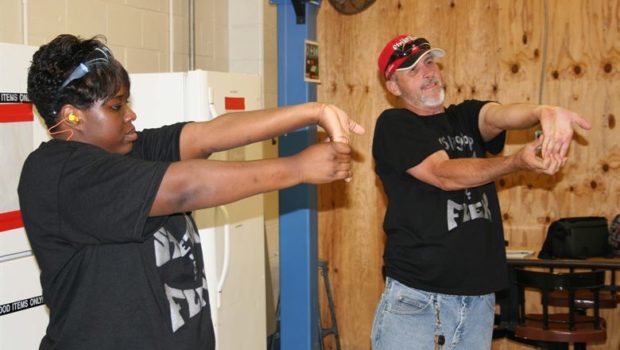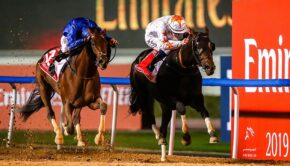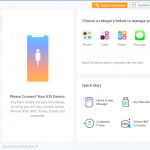Stretches for the Golf Swing wL
Golf stretches for a more fluid swing
Your golf swing takes power and technique. To develop either, you need mobility and good movement.
Today, you’re going to make your swing more fluid with stretching and other awesome techniques to reduce internal frictions and build a smooth drive.
Stretches
Stretching is key for any athlete. It’s not like your mom’s yoga – it’s aimed at putting together a well-rounded body and performance.
QL/Lower Back Stretches
We start with the muscles of the lower back – the Quadratus Lumborum (QL) – that can get very tight and reduce your ability to rotate through the torso. Obviously, this is going to result in some back soreness on longer courses and inhibit your swing.
You can use a straddled toe-touch stretch to really loosen the muscle. Not only will this improve your swing, but it’s likely to reduce your risk of lower back injury – a debilitating injury that affects 80% of people at some point. Win-win.
Tight Hip Flexors
Tightness in the front of the hip is going to drastically impede a good swing. Too much tightness here will make it impossible to reach full extension at the end of your drive – a key part of a powerful swing.
The best way of combatting tightness here is a combination of full-range movement and stretching. This should begin with the kneeling lunge, followed with moving through a deep, short lunge. These two simple exercises are key to building better long-term hip-flexor mobility.
You should be able to pull your knee all the way to your chest, but in the meantime, adding a few degrees of extension to your swing can make a huge difference. This means a smoother, stronger follow-through. It also brings the added benefit of a much safer swing and a healthier hip-spine region.
Lat Flexibility for a Smooth Follow-Through
Another muscle that can get in the way of a good swing is the latissimus dorsi. This is a huge muscle that runs from your lower back over your shoulder. It’s important to have strong lats for shoulder stability, but too much tightness can cause injury, or impinge when you follow through a shot.
One of the best ways to deal with this is using an offset version of the prayer stretch. Perform this just like normal, but off to either side. You’ll feel the stretch through the shoulder and side, really loosening off all the muscles that stabilise your body during rotation and reaching through the shot.
Combatting Golfer’s Elbow
Golfer’s elbow and tennis elbow usually describe the same thing: epicondylitis.
Sounds science-y. In reality, it’s overuse of the muscles in the forearms. Less sexy, but more actionable! The problem is that you’re gripping the club hard while it absorbs shock – which means your wrists, muscles, and elbows are absorbing that shock from your swing.
Over-use here puts too much demand on the tendons in the elbow and it can stretch, distort, or inflame them. What you need to do is simple: loosen the muscles of the wrist, move them through full ranges of movement, and get both sides of the joint stronger.
You should use a variety of gymnastic-style wrist flexibility and strengthening exercises. Gymnasts have some of the most stressed, most resilient wrists in all of sports. They’re constantly under pressure, and the gymnast’s stretching routine will help your golf swing tremendously.
This is all about learning to absorb force better and prevent injury. Golfer’s elbow is one of the fastest ways to mess up your swing and training – preventing it is key to a fluid swing!
Dynamic mobility
This is probably going to be more important for golf. You don’t just want better mobility, you need to develop better control throughout the whole range of motion. Dynamic mobility does just that and is a great way to warm up for your S&C sessions or even before a game.
Strength and Mobility Together
Weak glutes and tight hip flexors can be a problem for reaching full extension in your swing. The slow, controlled, deficit Bulgarian split squat is a great choice for dealing with all of these issues. It’s not a conventional stretch – more of a strengthening exercise – but it can fix your posture, mobility, and glute activation.
Many amateur golfers over-extend the lower back because they have tight hips at the front, and weak hips at the back. Learning to incorporate your buttocks in your swing can add serious power and opening up the hip flexors means better posture and health. Combining these two benefits with knee stability and leg strength with the Bulgarian split squat can radically improve your game.
Slings: How you Produce Power
Golf is a great example of the importance of movement slings. These are simply the connected muscle groups involved in rotation through the body.
These are overlooked because they’re not as glamorous as bulging biceps, but they’re the way that we produce force for sprinters, throwers, and golfers. Rotation through the hips, core and shoulders – and the ability to resist rotation – are absolutely essential functions that we don’t train often enough.
The slings include the muscles of the legs, hips, core, upper back, and into the shoulders. These are all tied into the way that you perform a swing. All you need to do is think about how much twisting is involved in a drive to see why slings are important.
They’re not just about power, however – they’re tied to proper core function, spine health, and they are essential in transferring force from the lower body. Improving your squat or deadlift won’t automatically improve your swing – you need to use specific strength/mobility exercises to control these movements.
To start with, use variations of the kneeling lunge and Spiderman stretch to warm up the hips. From there, use the iron cross to open up the hips and lower back. Finally, perform a walking lunge with a rotation – focus on keeping the core engaged throughout and turning with the muscles of the core (rather than just twisting).
Once you’ve built effective mobility in this movement, you can use the half-kneeling pallof press to strengthen your slings. This exercise improves your control over the rotational muscles of the core and hips – a key part of spinal health and power in the drive.
Mobility and Power – Why Choose?
There are two key exercises that are going to help you improve your swing – both in mobility and power. The first is the overhead med-ball slam. You might never have used this as a mobility exercise, but it has amazing benefits: emphasise the extended position and you’ll notice a huge amount of “opening up” in the lats and core. Get as tall as possible!
The second exercise is very similar, though it works in a different plane – Eric Cressey calls it the ‘rotational med-ball scoop toss’. We just call it the rotating med-ball throw, but whatever name you use, it’s a key exercise for mobilising the hips and core, while also improving balance, strength, power and some of the movement patterns you need for a better swing.
Overall, these two are the best option if you’re short on time. You can use the same piece of equipment for both and simply alternate between the two for a dozen reps each when you’re in a rush. You could always use it between swings if you feel tightness showing up.
Final Thoughts
These are some simple suggestions that can really change the way that your swing feels and how it performs. You need to get yourself in your best golfing equipment and take your strength, power, and mobility as seriously as your time on the course. Becoming a better athlete has many ‘moving parts’ and the quality of your swing relies on a balanced, limber, healthy body!















